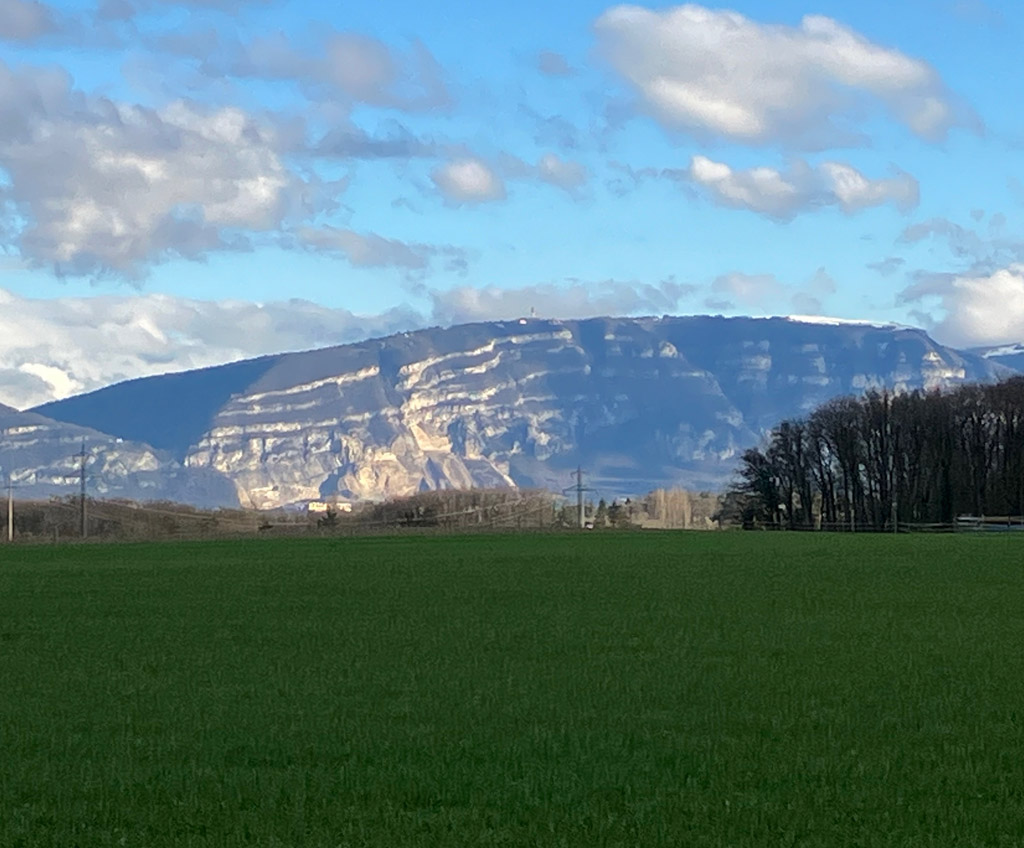Mary Wollstonecraft Shelley was demonstrating quite the imagination, or else a very poor sense of scale, when she got to the seventh chapter of Frankenstein. There we hear of Victor Frankenstein, trailed by his monster to the outskirts of Geneva on a dark and stormy night, watching the monster flee to a nearby mountain, as the lightning conveniently flashed:
I thought of pursuing the devil; but it would have been in vain, for another flash discovered him to me hanging among the rocks of the nearly perpendicular ascent of Mont Salève, a hill that bounds Plainpalais on the south. He soon reached the summit, and disappeared.
Shelley was true to her geography — for the most part. Just as Geneva is a city in Switzerland, and Plainpalais is one of its neighborhoods, Mont Salève is a looming presence to the south. But being a full three miles distant, and reaching 2,500 feet above the surrounding plain, no monster scaling its towering face could possibly be seen from any point in Plainpalais — nor could it reach the summit in the span of a brief narrative passage.
Now, this is no reason to reanimate the old myth that women have a hard time judging distance. After all, Shelley could as easily have been alluding to the arguably male habit of making up questionable excuses to avoid an unpleasant task. But most likely, she knew that the vivid imagery created by this bit of poetic license would be well worth rolling the eyes of the few readers familiar with the area. Truth can be as strange as fiction, but it usually needs some help.
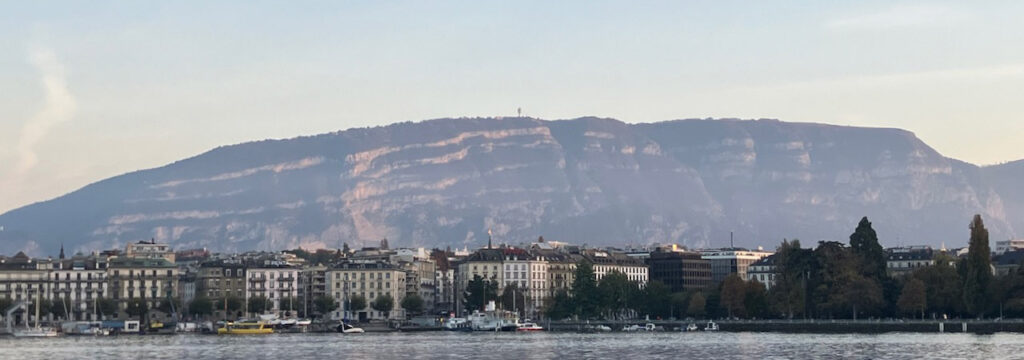
Shrinkage
This long-forgotten scrap of literary embroidery revealed itself to me on a recent visit to Geneva, for a week of mountain hiking. It had not originally been my intent to trace the footsteps of Frankenstein’s monster. But when I identified the Sentier du Salève as a hiking destination, some further research on Wikipedia informed me of the mountain’s sole notoriety as a scarcely-known Frankenstein reference. From then on, I would not be climbing this mountain alone, but in the company of Mary Shelley and her characters — and her ability to shrink this enormous French mountain to the size of an English garden folly.
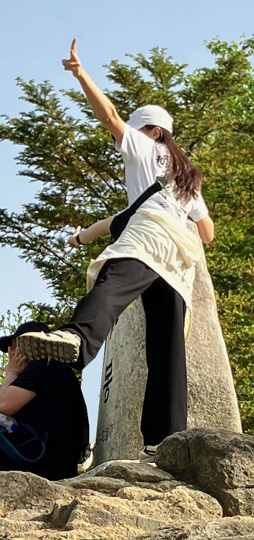
Today’s overtouristed places could use some similar shrinkage. The sight of hordes of selfie-takers raising two fingers in a vee seems to be the universal experience at every popular tourist destination — a spectacle that sometimes rivals the spectacle of the destination itself. Even obscure places are not immune to being suddenly popularized by social media and turned into a circus overnight — take the tiny Swiss village of Lauterbrunnen, or an ordinary park bench in Japan, as examples. It’s almost enough to make a solo traveler just want to stay home.
But climbing Mont Salève taught me that one can still enjoy the quiet essence of a destination — minus the taint of overadoration — by studiously approaching it from the past, instead of the present. Viewing a place not only in terms of what it is, but what it once was and has now become, can give us a unique perspective that significantly shrinks the impact of the crowds on our own personal experience. A few examples might help explain what I mean.
Steam punk
One day at the tail end of the pandemic, I happened by Dawn Treader Books in Ann Arbor, and paid a dollar for a book that probably should have been pulped long ago. Printed in 1951, it was a guidebook for Switzerland. Having visited a number of times for work, and not sure I ever could again, I thought I might be entertained by seeing how well or how poorly its travel tips still applied. Looking at the chapter on Geneva, I was arrested by the following passage:
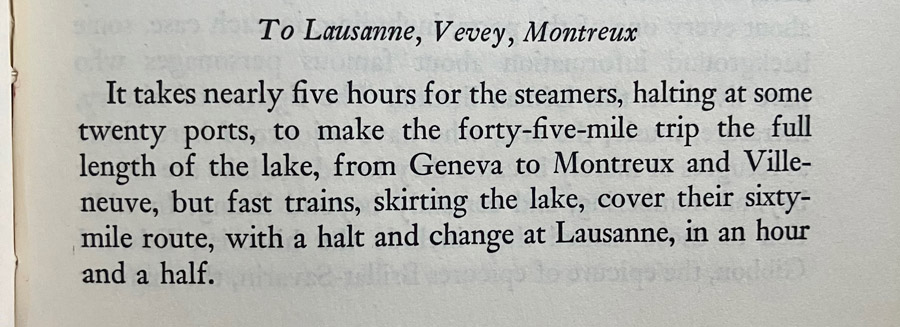
My first response was to realize that I’ve actually been on one of those trains that skirt Lac Leman, and the timetable is still about the same. But steamers? How quaint. Surely this is one of the factoids that sent this book to the dollar box. Imagine my sadness, then, that I could not obey the author’s recommendation to opt for the steamer:
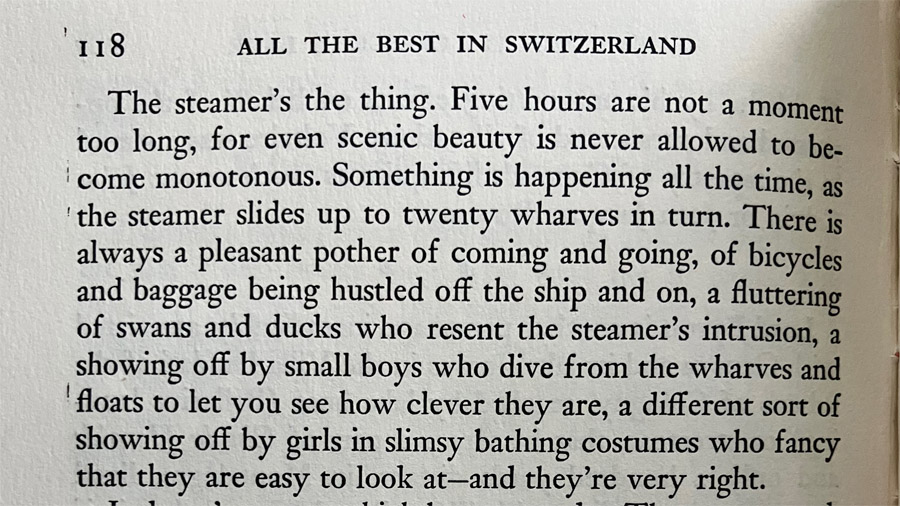
As a fan of pleasant pother, I was beginning to regret the date of my birth. Out of desperate curiosity, I performed a Google search for the appropriate keywords, to see just how late I was.
But incredibly, I found that the steamers still do exist — the very boats, in fact — and continue to be operated by the same line that has operated them for more than a century. They still make a similar circuit of Lac Leman, and seem to do it in a similar amount of time.
I opened the book again, and continued reading:

My previous ignorance of the steamer line is fully attributable to my resistance to what I imagine to be touristy, “must-do” attractions. A tacky lake or river cruise, that exists solely for the entertainment of visitors, is never on my radar. But in the new light of this old book, the steamers became a legitimate object of interest, as improbable survivors of a mode of transportation long since cast aside.
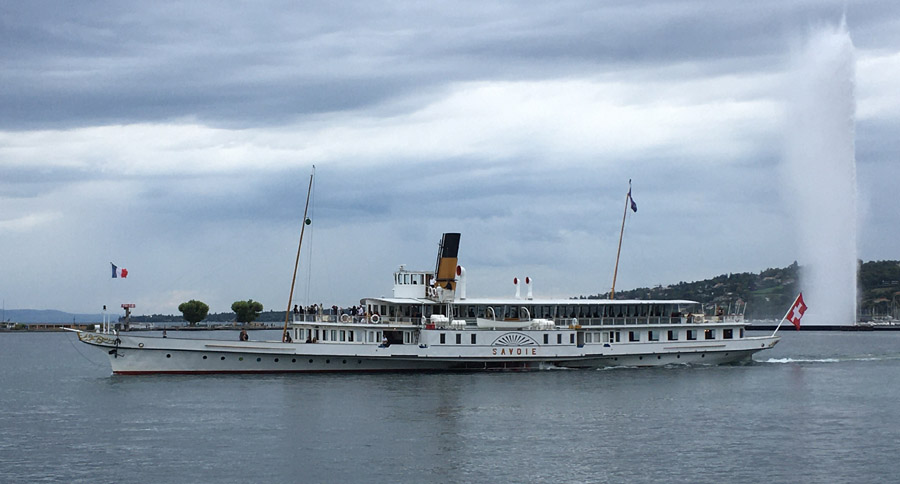
Eventually, travel became possible again. It was not the Savoie, pictured above, but the Simplon that was docked in Geneva when I arrived to purchase a ticket. I wanted to “slide up” to several wharves in turn, so I booked a ticket to Nyon, five stops up the shore.
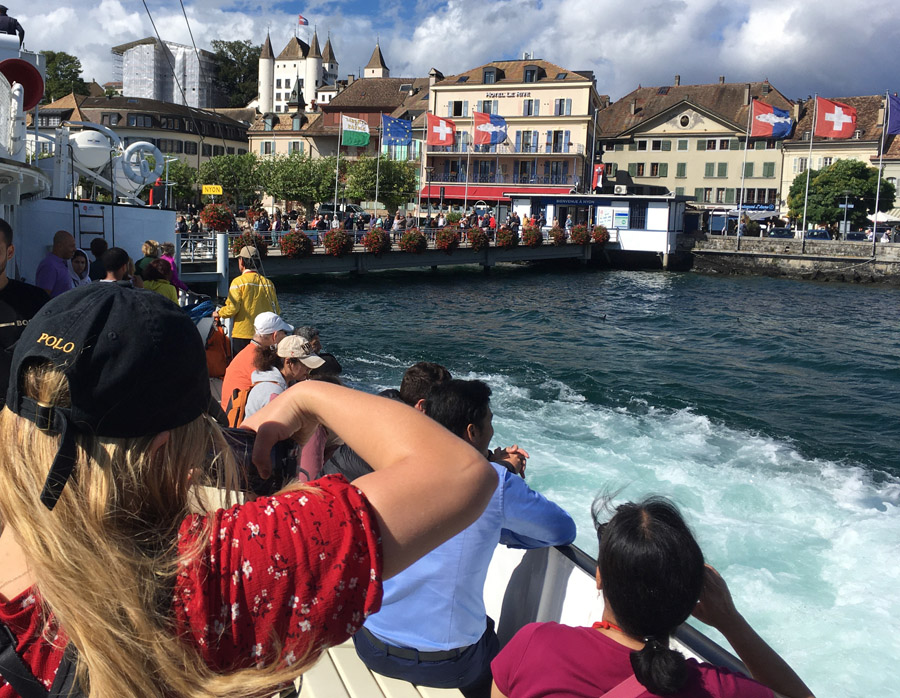
The churning, steam-powered paddle wheel did indeed cause the swans and ducks to flutter, and each docking was still accompanied by a certain pother centered around the boarding ramp. But I had missed the opportunity to learn the meaning of “slimsy,” probably by a generation or two.
Yet, armed with my historical perspective on the steamers, the fact that a hundred tourist selfies caught me in the act of taking a lake cruise didn’t bother me at all.
Set in stone
Another passage in the book looped me in to another time warp. Here, the author is describing Geneva’s “Reformation Wall,” a rather puzzling monument that stretches for over a hundred yards, adorned with dour stone figures of major characters of the Reformation movement (centered around John Calvin and his cohorts, and even including Roger Williams, the founder of the colony of Rhode Island):
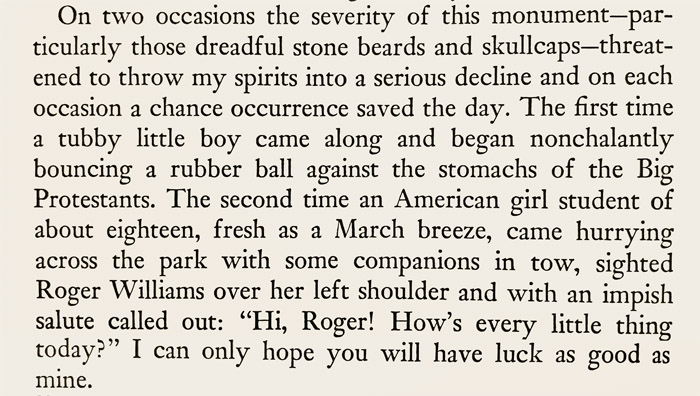
In several previous visits to Geneva I had never been moved to visit this monument. But now, the image of a tubby Swiss boy bouncing a ball against these stern figures at some distant time in the past, and a young girl expressing a curious interest in Roger Williams, made me want to see how these lonely figures are faring today.
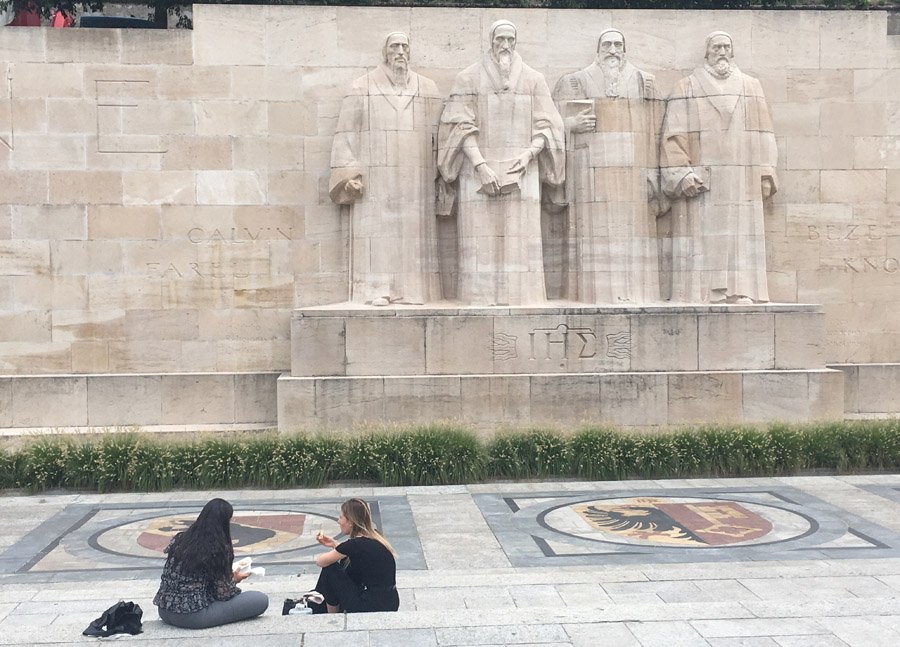
Resurrecting the memory of two mischievous passersby from an anecdote in a forgotten book was no less interesting than wondering about the number of casual lunches these Protestants have presided over since.
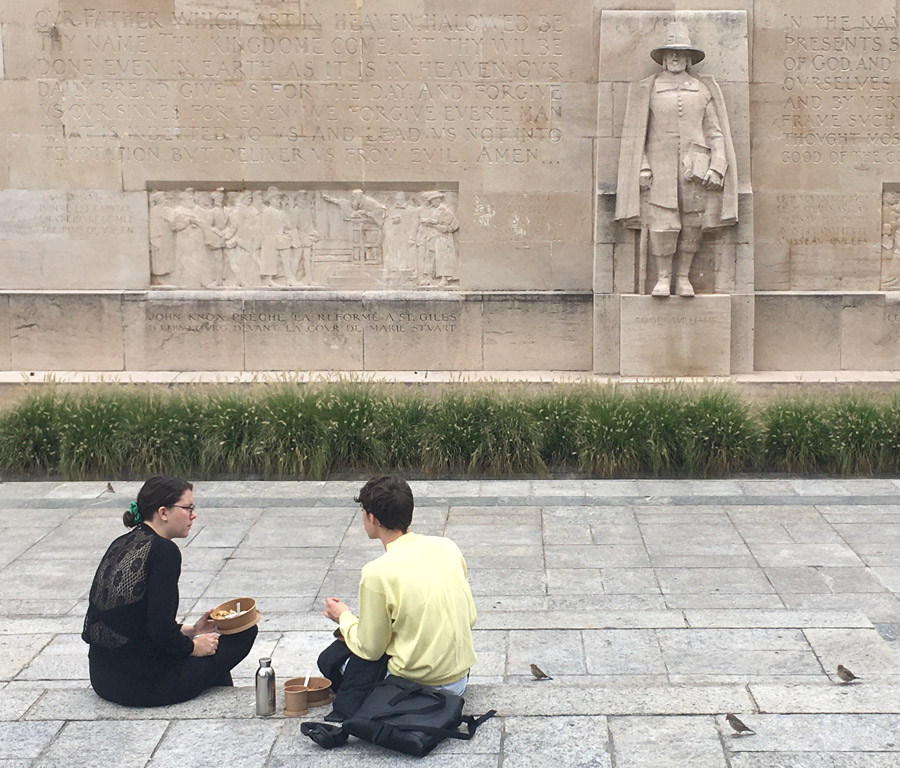
Not so lonely
Researching another trip, this time to the French town of Arles, I came across an 1850 book written by none other than Alexandre Dumas, best known today for The Count of Monte Cristo and The Three Musketeers (the first of which was honored with a brief cameo, if not outright plot theft, in the 1994 film The Shawshank Redemption).
Apparently, in leaner times, Dumas made ends meet by publishing travelogues. In Pictures of Travel in the South of France, he recalls a trip from Arles to a nearby town:

He was about to visit the abandoned hilltop town of Les Baux — which I had never heard of before. My first reaction was, what ever became of this place? Can I go too? Or am I too late, again?
A bit of research revealed that Dumas was well ahead of his time. Now known as Les Baux-de-Provence, it has since been fully rediscovered, and duly branded by the tourist industry as one of the “Most Beautiful Villages” of France.
Accordingly, I knew it would be mobbed with selfie-seekers. But this would be a tempting opportunity to test my theory about approaching popular destinations from the past. I worked a hike to Les Baux into my plans — following Dumas’ approximate path, as well as I could determine it.
Dumas’ observation about the reddishness of the country was still valid. Many a “steep and winding path” was worn into a distinctly red earth. Bauxite, the reddish mineral from which all aluminum is produced, was in fact named for Les Baux, where it was first identified in the 1820s. The red soil and rocks had yet to be fully understood or exploited in Dumas’ time. Much of the deposits seem to remain.
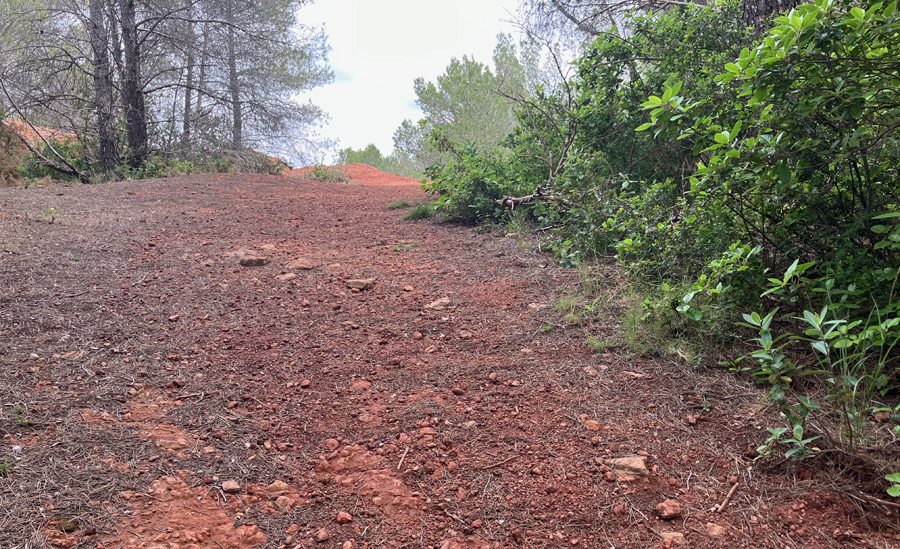
As the hilltop came into view, it was possible to see how Dumas and his party may have first “caught sight” of the town. Here, only olive groves and vineyards separate the plain from a rugged hike to the mountaintop.
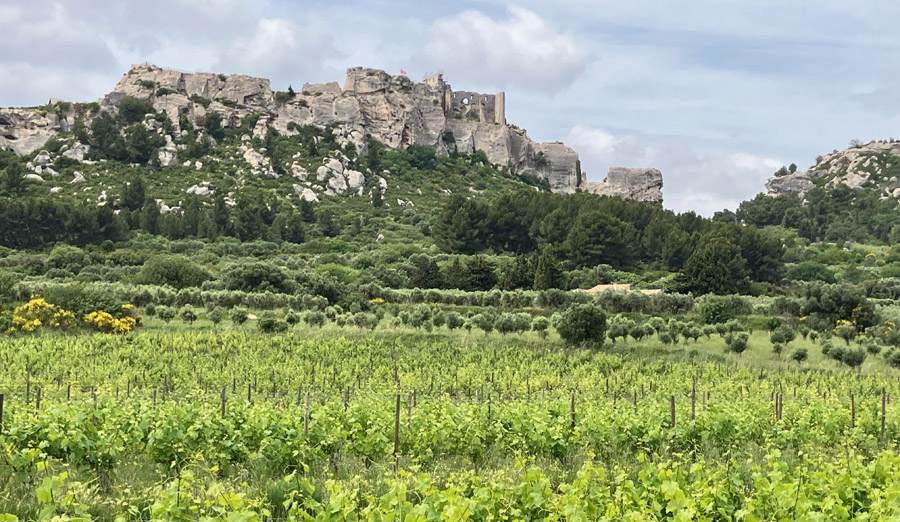
After following a network of footpaths through an incredible landscape, I reached the final approach to the town. What did Dumas have to say?

Indeed, the well-paved walk, although of modern construction, appeared to turn the same two corners described in the book. The second led to what could only be the same lower gate that Dumas had described. The wooden panels look inscrutably ancient — but we have it on Dumas’ word that, in or about the year 1850, these particular panels were not present.
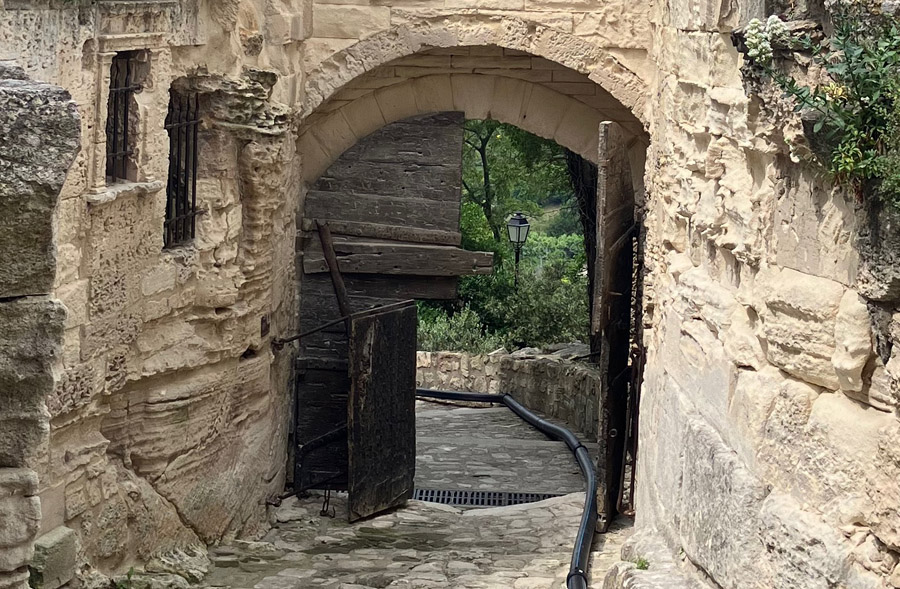
Only the fitter tourists, climbing a steep hill from a nearby highway, use this gate today. At the other end of the town, a modern asphalt road and parking lot stand ready to deliver visitors to the summit by car or bus.
And that they do. As I ascended the walkway, holding an image in my mind of the lonely, empty village that Dumas had described, I found it not so empty today.
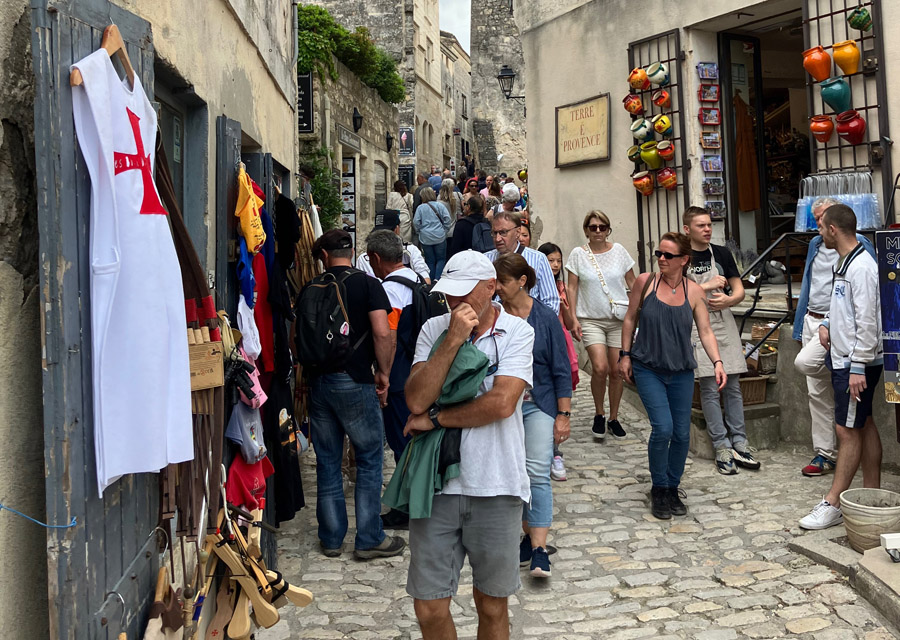
Dumas had mentioned that his party was careful to find refreshments before climbing to the ruins, “as we should have some trouble to get any at Les Baux.” This oversight has since been corrected. Many of the empty windows and doors that Dumas would have encountered now offer efficient window service, where anyone can get a tasty sandwich for just a few euros.
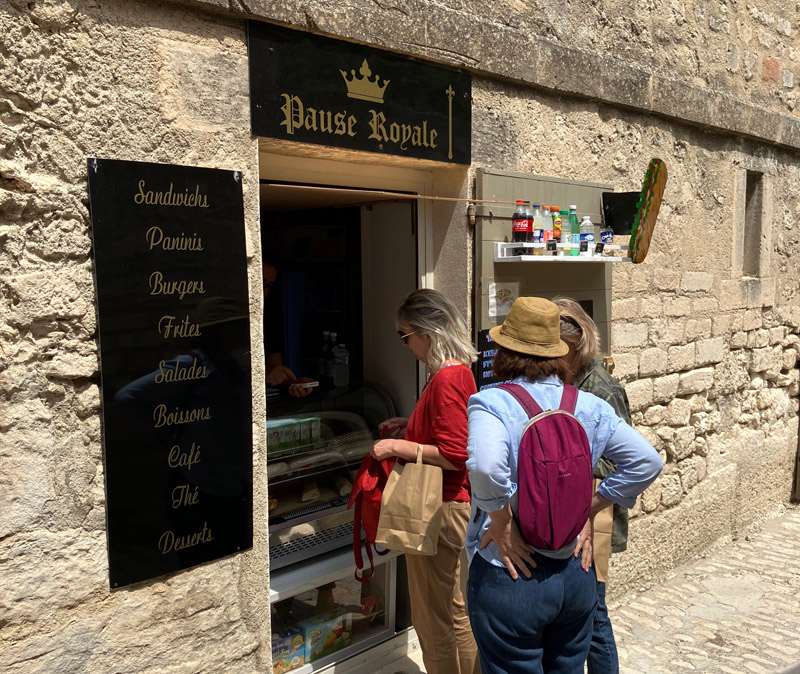
Again, the perspective offered by an obscure passage in a neglected book helped me fly above the annoyances of the pressing crowds. I purchased a sandwich and a beer, and sat peacefully on a stone wall, watching the throngs flow obliviously by — laying down yet another absurd chapter in the historical record of this odd place.
Novelists often rely on literary license to help their work relate to the real world, by gently bending reality in a way that supports the aims of the story. Although we know that Frankenstein’s monster is entirely fictitious, we also know that grave-robbing for scientific purposes is a historical fact. Might some version of Victor Frankenstein have actually existed? It is that lurking ambiguity, and not the obvious fantasy of the monster itself, that causes the skin to crawl. The placement of events and characters on a spectrum between truth and fiction lends much of the intrigue and mystery to a good story.
Similarly, we can bend some part of our current reality by denying some part of the present, and viewing our surroundings through a carefully focused lens on the past. Much of my appreciation of Les Baux-de-Provence, and the steamers at Geneva, was provided by a deeper understanding of their journey to the present day — carried in part by examples of brief and fleeting moments that occurred to others, long ago. I became far more aware that the moments I was experiencing myself were of the same nature, separated only by arbitrary time. Rather than viewing myself as a victim of idle tourists sauntering their way through a consumer culture, I focused on my status as, probably, the only one in the crowd who could see all the way back — to a spooky, abandoned village in the time of Dumas, and to a time when steamer transportation was deeply woven into the fabric of Swiss lake communities. It made a tremendous difference.
Incidentally, my climb to Mont Salève delivered a bonus lesson on the nature of literary license: it doesn’t just apply to fiction. Tapped out from the previous day’s hike, I was a bit worried about engaging this rather rugged walk, all uphill — but the Swiss hiking website painted a glorious picture, in artful and encouraging prose. It described a short hike, really, that “holds many surprises in store.” No worries about picking your way back down a steep and rocky trail, because at the top of the ascent, “the Salève cable car takes you back.” I was sold.
But the pursuit of brevity and grace can leave clunky details behind. The writer failed to mention the finicky schedule of the cable car, whose winter schedule is spotty, and never includes Thursdays. Finding myself entirely alone on an abandoned mountaintop, late on a Thursday afternoon, I had no choice but to struggle back down the treacherous trail in rapidly fading twilight — without headlamp, hiking poles, or properly functioning hamstrings.
A rather terrifying experience, yet somehow a fitting farewell — from a mountain whose only fame is a bit part in a Gothic novel.
Article and photos Copyright 2024.
To be notified of new articles, visit https://whatshallweweird.com/subscribe/
